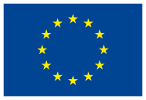Info on ILs
Here, we will try to compile links to another pages with useful information about Ionic Liquids.
A place with some basic information on ILs from QUILL (Queen's University Ionic Liquid Laboratories) and another from the Organic Chemistry Portal.
A number of videos and pdfs from the Winter School on Ionic Liquids in Porto are available online. The videos are from the lectures:
- An overview and state of the art on ILs (First part and second) by Ken Seddon.
- Synthesis and purification by Emilia Tojo and Carlos Afonso.
- Properties by João Coutinho and Eduardo Filipe.
- Simulation and modelation by Luis Varela Cabo and Jose Palomar.
- Functionalities and applications by Rasmus Fehrmann, Cristina Silva Pereira, Sónia Ventura and Eduardo Marques.
Follow the link if you want to check all the information available from the Winter School.
Safety and good working practices
A small reminder on how to proceed when dealing with Ionic liquid synthesis
Open access books
Ionic Liquids: Applications and Perspectives
Edited by Alexander Kokorin
Ionic Liquids: Theory, Properties, New Approaches
Edited by Alexander Kokorin
Handbook of Ionic Liquids: Properties, Applications and Hazards (some chapters are open access)
Edited by Jihoon Mun and Haeun Sim
Authors
People doing research on Ionic Liquids:
A google scholar search for authors associated with the therm "ionic liquid" shows this.
A google scholar search for authors associated with the therm "ionic liquids" shows this.
Databases
Description (from their webpage) :
ILThermo is a web-based ionic liquids database available free to the public. It aims to provide users worldwide with up-to-date information on publications of experimental investigation on ionic liquids, including numerical values of chemical and physical properties, measurement methods, sample purity, uncertainty of property values, as well as many other significant measurement details. The database can be searched by means of the ions constituting the ionic liquids, the ionic liquids themselves, their properties, and references.
UFT / Merck Ionic Liquids Biological Effects Database (also known as Bremen Toxicity Database)
Description (from their webpage) :
This database is addressed to producers, developers and downstream users of ionic liquids in different fields of application to facilitate the selection of (eco)toxicologically favourable ionic liquids.
... the UFT investigated more than 300 different ionic liquids and their precursors in screening toxicity assays, and several structures have been characterised (eco)toxicologically in detail using an (eco)toxicological test battery comprising different levels of biological complexity - from enzymes, cells, micro organisms up to organisms and multi-species-systems. Furthermore, several biodegradation tests were performed to determine the biodegradability of ionic liquid structures.
DDBST (also known as Dortmund Data Bank)
Description (from their webpage):
The Dortmund Data Bank (DDB) was started in 1973 in the research group of Prof. Dr. J. Gmehling at the University of Dortmund (Chair of Reaction Engineering (Prof. Dr. U. Onken) with the compilation of VLE-data for normal boiling mostly organic compounds. It was later extended to cover also pure component properties, liquid-liquid equilibrium data, excess enthalpies, activity coefficients at infinite dilution, ...
(and also from their webpage)
... during the last years different research groups started to measure the required pure component properties and mixture data. Unpublished data from the industrial chemistry research group of Prof. Gmehling and other sources (private communications) as well as published data are continuously stored in special files of the Dortmund Data Bank.
Description (from their webpage):
ChemSpider is a free chemical structure database providing fast access to over 32 million structures, properties, and associated information. By integrating and linking compounds from ~500 data sources, ChemSpider enables researchers to discover the most comprehensive view of freely available chemical data from a single online search. It is owned by the Royal Society of Chemistry.

